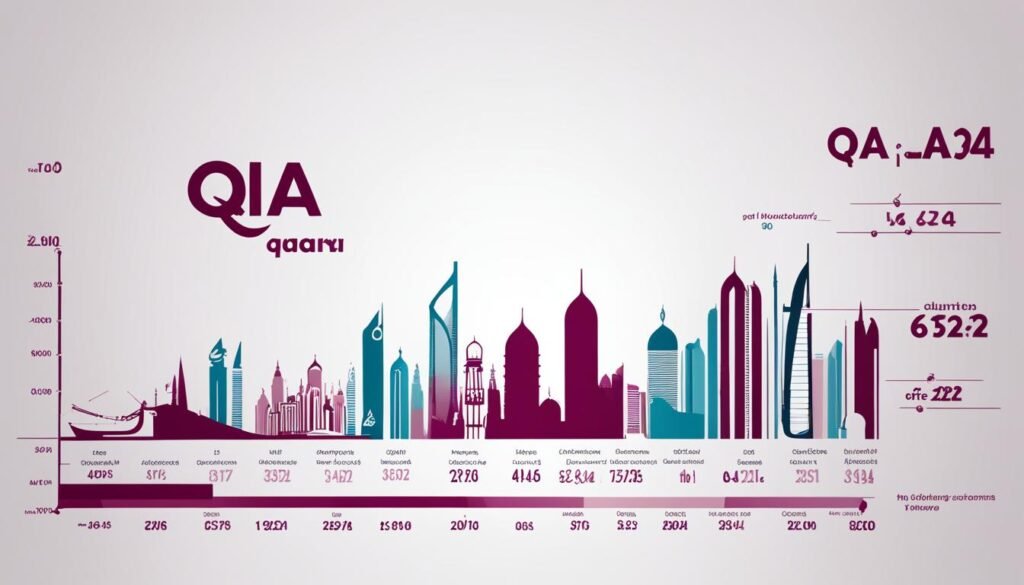Quick Facts
- Population (mid-2025 estimate): about 3.12 million, based on UN-linked estimates used by Worldometer
- World Bank mid-year 2024 series: ~2.86 million (different method and cut-off)
- Expat share: roughly 85% to 90% in most references
- Male to female: about 3:1 due to migrant workforce structure
- How to verify: check the monthly population page on Qatar’s official statistics portals
This page provides a clear view of Qatar’s population today, explains why different sources report different totals, and indicates where to confirm the latest official figure. Mid-2025 estimates place Qatar’s population at approximately 3.12 million people, based on UN-derived datasets, while the World Bank’s 2024 mid-year series lists about 2.86 million.
These differences stem from methodological differences and timing, as well as whether non-resident categories are included. (Worldometer, World Bank Data)
Why numbers differ across sources
- Cut-off date vs. live counter: UN mid-year estimates differ from live “population clocks.”
- Coverage: Some series include temporary residents, while others do not.
- Revisions: National and UN datasets are periodically revised, so a 2024 line may not match a 2025 live counter.
For a current snapshot, the UN-linked Worldometer shows ~3.12 million as of mid-2025. The World Bank series shows ~2.86 million for 2024 mid-year. (Worldometer, World Bank Data)
Gender balance and expat share
Qatar’s population skews male due to the size of the working-age migrant labor force. Recent data indicate that the male share is around 75%, while the female share is around 25%. Most references place expatriates at roughly 85%–90% of the total. Use these as ballpark figures, and verify the exact ratios using official datasets when necessary. (World Population Review, Wikipedia)
How to check the latest official figure
The State of Qatar publishes population updates on its statistics portals. Look for:
- Monthly population pages and “Qatar in Figures” PDFs from the National Planning Council or PSA.
- Datasets on Qatar Open Data that cover mid-year estimates and population by age and sex.
These pages are the best place to confirm the newest count before you publish or cite. (NPC, Qatar Open Data, Data.gov.qa)
Cities and where people live
Most residents live in the Doha metro area, with large communities in Al Rayyan and growth corridors around Lusail and Al Wakrah. Check official tables by zone or mid-year estimates if you need city shares for a report. (Data.gov.qa)
Simple read of the trend
Qatar’s totals have tracked with project phases and labor demand. The UN and World Bank series both show a climb over the last decade, a pause around the pandemic years, followed by a rebound into 2024–2025. Always compare like-for-like when you line up charts. (World Bank Data)
Helpful related guides
- Planning a move or short stay? See Qatar On-Arrival Visa Guide (2025) and Qatar ID Check with MOI (2025)
- Everyday setup: Emergency Numbers in Qatar (2025)
- Money matters: Invest in Qatar (2025) and Qatar Gold Rate Today
FAQ
Mid-2025 estimates place Qatar’s population at approximately 3.12 million, based on UN-linked datasets used by Worldometer. Always check the Qatar statistics portal for the latest monthly figures before citing them.
Methods and timing differ. The UN mid-year series, live counters, and national monthly totals can each use a different cut-off and coverage, resulting in varying outcomes.
Most references place expatriates at around 85%–90% of the resident population. The exact share changes with hiring cycles, so check the latest official tables for a precise value when needed.
Around 3 males for every 1 female in recent aggregates. The ratio reflects the size of the working-age migrant labor force.
Use the National Planning Council or PSA’s monthly population pages, as well as the Qatar Open Data portal. These sources publish the latest tables and PDFs.
Conclusion
Use UN and World Bank series for year-to-year comparisons, then confirm the current count on Qatar’s statistics portals before quoting a number.
DISCLAIMER:
This blog post is for informational purposes only. We make every effort to provide accurate, current, and well-sourced information, but we cannot guarantee its completeness or absolute accuracy.
All images, videos, and logos used on this page belong to their respective owners. We aim to credit and reference them appropriately. If you are the rightful owner and wish to have your image, video, or logo removed, please contact us.
Author
-
Owais Qarni is the cofounder and author at Qatariscoop. A Dreamer, Explorer And Optimist!
View all posts
His work focuses on creating informative and engaging content, offering fresh perspectives on topics relevant to both local and global audiences.













